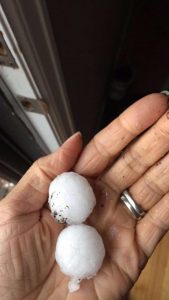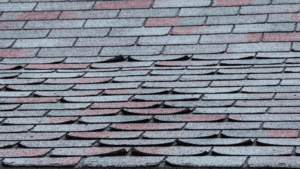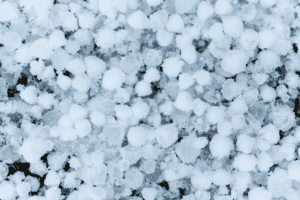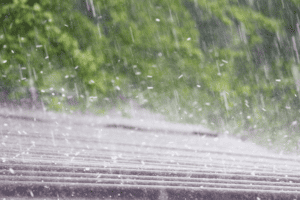 The 2017 Colorado storm season has proven to be yet another for the record books. In fact, according to the Rocky Mountain Insurance Information Association, the storm that tore through Denver on May 8, was Denver’s most expensive catastrophe in history. The group estimated that insurers responded to more than 150,000 auto claims and 50,000 homeowner claims totaling at an estimated $1.4 billion in damage.
The 2017 Colorado storm season has proven to be yet another for the record books. In fact, according to the Rocky Mountain Insurance Information Association, the storm that tore through Denver on May 8, was Denver’s most expensive catastrophe in history. The group estimated that insurers responded to more than 150,000 auto claims and 50,000 homeowner claims totaling at an estimated $1.4 billion in damage.
At Elite Roofing, we have helped thousands of homeowners repair hail damage caused by this and other severe storms. We often hear from homeowners who are concerned that hail has compromised the integrity of their roof. While this may very well be the case, it’s important to consult an expert before involving your insurance company.
Why Get a Roof Inspection Prior to Contacting Your Insurance Provider?
Once you have reached out to your insurance provider to inquire about hail damage, the claims process is already in motion. Even if your insurer does end up reimbursing you for repairs, your claim will be a part of your record with your insurance provider moving forward. This is why it’s a good idea to have a professional inspection completed before contacting your insurance provider.
The information provided by your roof inspector will serve you well should you choose to go through with a hail damage claim. You will have a better understanding of the extent of the damage to your roof as you interface with your insurer and negotiate the terms of your claim. You may also find that your damage is not extensive enough to warrant contacting your insurer, saving you from making an unnecessary claim.
Do I Have Hail Damage?
Depending on the type of roof you currently have, you will need to look for different signs of hail damage. Regardless of your roofing material, you may also notice signs of hail damage to other parts of your property. Look for dents or damage to your AC unit, roof vents, sky lights, window screens, gutters and downspouts. If you notice signs of hail damage, chances are your roof also sustained damage.
Asphalt Roof
The most common type of residential roofing material, asphalt roofs will show the following signs of hail damage:
- Dented or broken shingles
- Missing granules in isolated spots
- Pockmarks that are soft to the touch
Metal Roof
Metal roofs are designed to hold up to severe weather, they can however sustain damage from strong hail storms. The good news is, hail damage is very easy to identify on metal roofs. A professional will simply look for dents and help you determine if the damage is extensive enough to make a claim.
Shake Roof
Though traditional shake is no longer commonly used, these beautiful cedar roofs can still be found in many areas. If your shake roof was recently hit by hail, look for the following signs:
- Broken or split shingles
- Loose shingles
- Missing shingles
Tile Roof
Yet another durable material designed to stand up to Mother Nature, tile roofs can also sustain damage in severe hail storms. Watch for these signs of hail damage:
- Cracked tiles
- Gouges or divots in tiles
Book Your Roof Inspection Today!
If you suspect that you have sustained damage from this summer’s storms, we encourage you to contact us right away. If left for too long, you run the risk that your insurance provider will not cover the damage. Allow one of our skilled inspectors to help you determine if you should consider filing a claim. At Elite Roofing, we are proud to offer free, no-obligation roofing inspections. Book yours today. You have nothing to lose and so much to gain!









